Hello
And the grounds loaded?
And the grounds loaded?
Czy wolisz polską wersję strony elektroda?
Nie, dziękuję Przekieruj mnie tamPiotrPitucha wrote:Hello
And the grounds loaded?
 fuse.jpg Download(13.15 kB)
fuse.jpg Download(13.15 kB)  fuseok.jpg Download(13.15 kB)
fuseok.jpg Download(13.15 kB)~ ~ ~ ~ ~ ~ ~ ~ ~ ~ ~ ~ ~ ~ ~ ~
>>>: avrdude -u -c usbasp -p m328p -P COM4 -B 0.5 -U flash:w:"C:\Users\User\Desktop\M328 firmware\m328.hex":a -U eeprom:w:"C:\Users\User\Desktop\M328 firmware\m328.eep":a -U lfuse:w:0xF7:m -U hfuse:w:0xD9:m -U efuse:w:0xFD:m
avrdude.exe: set SCK frequency to 1500000 Hz
avrdude.exe: warning: cannot set sck period. please check for usbasp firmware update.
avrdude.exe: AVR device initialized and ready to accept instructions
Reading | ################################################## | 100% -0.00s
avrdude.exe: Device signature = 0x1e950f (probably m328p)
avrdude.exe: NOTE: "flash" memory has been specified, an erase cycle will be performed
To disable this feature, specify the -D option.
avrdude.exe: erasing chip
avrdude.exe: set SCK frequency to 1500000 Hz
avrdude.exe: warning: cannot set sck period. please check for usbasp firmware update.
avrdude.exe: reading input file "C:\Users\User\Desktop\M328 firmware\m328.hex"
avrdude.exe: input file C:\Users\User\Desktop\M328 firmware\m328.hex auto detected as Intel Hex
avrdude.exe: writing flash (24802 bytes):
Writing | ################################################## | 100% 25.81s
avrdude.exe: 24802 bytes of flash written
avrdude.exe: verifying flash memory against C:\Users\User\Desktop\M328 firmware\m328.hex:
avrdude.exe: load data flash data from input file C:\Users\User\Desktop\M328 firmware\m328.hex:
avrdude.exe: input file C:\Users\User\Desktop\M328 firmware\m328.hex auto detected as Intel Hex
avrdude.exe: input file C:\Users\User\Desktop\M328 firmware\m328.hex contains 24802 bytes
avrdude.exe: reading on-chip flash data:
Reading | ################################################## | 100% 12.77s
avrdude.exe: verifying ...
avrdude.exe: 24802 bytes of flash verified
avrdude.exe: reading input file "C:\Users\User\Desktop\M328 firmware\m328.eep"
avrdude.exe: input file C:\Users\User\Desktop\M328 firmware\m328.eep auto detected as Intel Hex
avrdude.exe: writing eeprom (1024 bytes):
Writing | ################################################## | 100% 10.91s
avrdude.exe: 1024 bytes of eeprom written
avrdude.exe: verifying eeprom memory against C:\Users\User\Desktop\M328 firmware\m328.eep:
avrdude.exe: load data eeprom data from input file C:\Users\User\Desktop\M328 firmware\m328.eep:
avrdude.exe: input file C:\Users\User\Desktop\M328 firmware\m328.eep auto detected as Intel Hex
avrdude.exe: input file C:\Users\User\Desktop\M328 firmware\m328.eep contains 1024 bytes
avrdude.exe: reading on-chip eeprom data:
Reading | ################################################## | 100% 0.61s
avrdude.exe: verifying ...
avrdude.exe: 1024 bytes of eeprom verified
avrdude.exe: reading input file "0xF7"
avrdude.exe: writing lfuse (1 bytes):
Writing | ################################################## | 100% 0.00s
avrdude.exe: 1 bytes of lfuse written
avrdude.exe: verifying lfuse memory against 0xF7:
avrdude.exe: load data lfuse data from input file 0xF7:
avrdude.exe: input file 0xF7 contains 1 bytes
avrdude.exe: reading on-chip lfuse data:
Reading | ################################################## | 100% 0.00s
avrdude.exe: verifying ...
avrdude.exe: 1 bytes of lfuse verified
avrdude.exe: reading input file "0xD9"
avrdude.exe: writing hfuse (1 bytes):
Writing | ################################################## | 100% 0.00s
avrdude.exe: 1 bytes of hfuse written
avrdude.exe: verifying hfuse memory against 0xD9:
avrdude.exe: load data hfuse data from input file 0xD9:
avrdude.exe: input file 0xD9 contains 1 bytes
avrdude.exe: reading on-chip hfuse data:
Reading | ################################################## | 100% 0.00s
avrdude.exe: verifying ...
avrdude.exe: 1 bytes of hfuse verified
avrdude.exe: reading input file "0xFD"
avrdude.exe: writing efuse (1 bytes):
Writing | ################################################## | 100% 0.02s
avrdude.exe: 1 bytes of efuse written
avrdude.exe: verifying efuse memory against 0xFD:
avrdude.exe: load data efuse data from input file 0xFD:
avrdude.exe: input file 0xFD contains 1 bytes
avrdude.exe: reading on-chip efuse data:
Reading | ################################################## | 100% 0.00s
avrdude.exe: verifying ...
avrdude.exe: 1 bytes of efuse verified
avrdude.exe done. Thank you.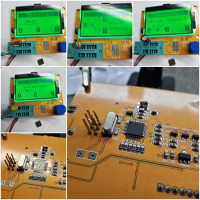 page.jpg Download(375.58 kB)
page.jpg Download(375.58 kB)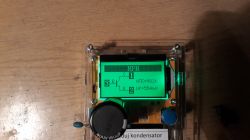
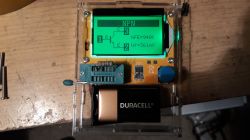

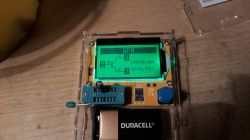
 TTESTER M 328 TFT.jpg
Download
(206.08 KB)
TTESTER M 328 TFT.jpg
Download
(206.08 KB)
 TTESTER MK 168.jpg
Download
(198.38 KB)
TTESTER MK 168.jpg
Download
(198.38 KB)
 TTESTER FISH 8840.jpg
Download
(191.01 KB)
TTESTER FISH 8840.jpg
Download
(191.01 KB)
 TTESTER M 328 kit.jpg
Download
(183.43 KB)
TTESTER M 328 kit.jpg
Download
(183.43 KB)
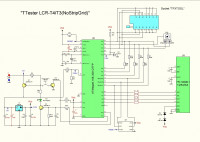 TTESTER LCR T4 .T3 no strip grid.jpg
Download
(184.47 KB)
TTESTER LCR T4 .T3 no strip grid.jpg
Download
(184.47 KB)
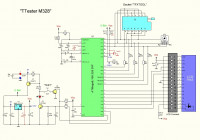 TTESTER M 328.jpg
Download
(185 KB)
TTESTER M 328.jpg
Download
(185 KB)
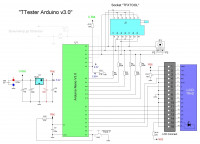 Ttester arduino t3.jpg
Download
(259.74 KB)
Ttester arduino t3.jpg
Download
(259.74 KB)
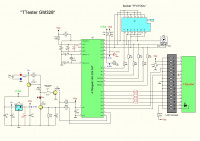 TTESTER GM 328.jpg
Download
(183.65 KB)
TTESTER GM 328.jpg
Download
(183.65 KB)
 TESTER TC 1.jpg
Download
(302.59 KB)
TESTER TC 1.jpg
Download
(302.59 KB)
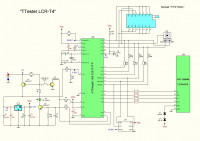 TESTER LCR T4.jpg
Download
(170.28 KB)
TESTER LCR T4.jpg
Download
(170.28 KB)
 MG 328.jpg
Download
(200.33 KB)
MG 328.jpg
Download
(200.33 KB)
 TC 1 multifuncion.jpg
Download
(255.72 KB)
TC 1 multifuncion.jpg
Download
(255.72 KB)
 After the measurements:
After the measurements:zepter wrote:No. But before that, I checked it on sockets 1-3 and it was OK.
Aress124 wrote:@hrvojezd1968 Have you calibrated?
